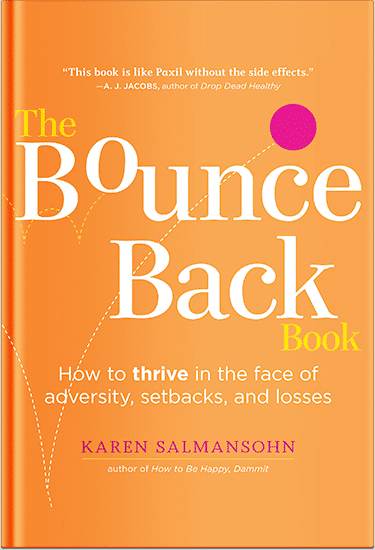 Adrenaline can mask serious injuries after a fall or fender bender. Learn the delayed symptoms of whiplash, concussions, and more that you can’t afford to ignore.
Adrenaline can mask serious injuries after a fall or fender bender. Learn the delayed symptoms of whiplash, concussions, and more that you can’t afford to ignore.
In New York City, a sudden jolt on the subway, a slip on a wet sidewalk, or a minor fender bender in crosstown traffic is practically a rite of passage. The default response is to brush yourself off, say “I’m fine,” and keep moving.
In a city that demands resilience, taking a moment for a minor ache feels like a luxury you can’t afford.
What seems like a minor ache in the hours after a crash could actually be your body’s first warning flag. In the immediate aftermath of an accident, the body’s fight‑or‑flight response floods the system with adrenaline and endorphins, which act as natural pain‑killers and can mask injuries for hours or even days.
According to the CDC, concussion symptoms ‘may not occur for hours or days after the injury’. And research on whiplash notes that symptoms are frequently delayed ‘even up to one whole day or more’. That soreness you dismiss could be the early sign of a whiplash injury, a concussion or internal damage — and ignoring it increases the risk of chronic complications.
Key Takeaways
- An adrenaline rush after an accident can temporarily mask the pain from serious injuries like whiplash, concussions, and internal damage.
- Delayed symptoms like persistent headaches, neck stiffness, dizziness, or mood changes are red flags that should not be dismissed as “normal soreness.”
- Common NYC incidents—from a slip on a wet subway platform to a minor taxi collision—are frequent causes of these hidden injuries.
- Seeking a medical evaluation after any accident is critical for your health and for documenting your injuries, which is vital if you need to seek compensation later.
The “Walk It Off” Trap: Why You Feel More Pain Days After an Accident
It’s a common and confusing experience: you feel relatively okay right after a fall or a minor collision, but wake up two days later in significant pain. This isn’t your imagination, and it’s certainly not a sign of weakness. It’s a predictable biological process.
When your body experiences sudden shock, it triggers a fight‑or‑flight response. One study published in PMC observed that participants exposed to acute stress were significantly less sensitive to pain. A review in MDPI explains that acute stressors can suppress pain signaling, further masking injury symptoms. These chemicals increase your heart rate, sharpen focus, and block pain signals — creating the dangerous illusion that you are uninjured, even when whiplash, concussion, or internal damage may already be present.
Over the next 24 to 48 hours, as these hormones recede, the body’s inflammatory response begins. This is when swelling sets in around damaged tissues, and the pain signals that were previously blocked can finally reach your brain. The pain you feel days later is often the first true indicator of the extent of your injuries. This delayed pain is a crucial signal that your body needs attention.
If you’ve recently been in an accident and are noticing unusual symptoms, it’s important to pay attention to your health and how any injuries could affect your recovery. Talking with an experienced New York injury law firm can help you understand your options, guide you through documenting your case, and make sure your rights are protected. Having knowledgeable support allows you to focus on getting better without added stress.
5 Hidden Injuries New Yorkers Often Ignore (And Why You Shouldn’t)
Recognizing the difference between general post-accident soreness and a specific injury is key. Here are five common injuries that often present with delayed symptoms.
1. Whiplash and Soft Tissue Injuries
Many people think whiplash only happens in high-speed car crashes, but it can result from any event that causes your head to snap forward and backward violently. A sudden stop on the L train, a rear-end tap from a taxi, or even a slip-and-fall can cause this type of injury to the soft tissues of your neck.
Because the damage is to muscles and ligaments, the pain isn’t always immediate. Be on the lookout for symptoms that develop over a day or two:
- Neck pain and stiffness that gets progressively worse.
- Headaches, especially at the base of the skull.
- Dizziness or a feeling of being off-balance.
- Pain or soreness in your shoulders and upper back.
Ignoring these signs is a serious risk. In fact, more than 3 million new cases of whiplash occur each year, with over 50% leading to chronic symptoms. What starts as stiffness can evolve into long-term pain and reduced mobility if left untreated.
2. Concussions and Traumatic Brain Injuries (TBIs)
One of the most dangerous misconceptions about head injuries is that you have to lose consciousness to have a concussion. This is false. Any jolt or blow that causes your brain to move inside your skull can result in a traumatic brain injury (TBI). This could happen from hitting your head during a fall on an icy patch or from luggage falling from an overhead rack on a crowded bus.
The symptoms of a concussion are often subtle and may not appear right away. They can be physical, cognitive, or emotional. Watch for:
- A persistent or worsening headache.
- “Brain fog” or difficulty concentrating.
- Unusual sensitivity to light and noise.
- Irritability, anxiety, or sudden mood changes.
- Changes in your sleep patterns (sleeping more or less than usual).
Given the potential severity, no head injury should be taken lightly. To put it in perspective, in 2021, there were about 190 TBI-related deaths per day in the U.S.. Seeking a medical evaluation is the only way to rule out a serious injury.
3. Herniated Discs and Back Injuries
The force from a sudden twist or impact—like what you’d experience in a car accident or a fall down a flight of subway stairs—can cause one of the soft, rubbery discs cushioning your vertebrae to rupture or slip out of place. This is a herniated disc, and it can put intense pressure on the spinal nerves.
While you might feel some initial back pain, the specific and more severe symptoms of a herniated disc can take time to manifest. These red flags go beyond typical muscle soreness:
- Sharp, shooting pain that radiates from your back down into a leg or arm.
- Numbness, tingling, or a “pins and needles” sensation in your limbs.
- Weakness in a specific leg or arm, making it difficult to stand or hold objects.
Untreated disc injuries can lead to permanent nerve damage, chronic pain, and a significant loss of quality of life. If you experience these radiating symptoms, it is not something to “wait out.”
4. Internal Bleeding
Internal bleeding is the most life-threatening type of hidden injury and can result from blunt force trauma. This can happen if you are thrown against a steering wheel, struck by a vehicle, or fall hard onto a sharp object. Because the bleeding is not visible, victims may not realize the severity of their condition until they are in critical danger.
The symptoms develop as blood accumulates inside the body cavity, and they signal a medical emergency. If you experience any of the following hours after an accident, go to the emergency room immediately:
- Severe, deep pain in your abdomen or chest.
- Deep purple bruising on your torso.
- Dizziness, lightheadedness, or fainting.
- A swollen, firm, or hard abdomen.
Time is absolutely critical when dealing with potential internal bleeding. Do not hesitate to seek immediate medical help.
5. Psychological Trauma
The impact of an accident is not just physical. The mental and emotional shock can cause significant psychological injuries that are just as real and debilitating as a broken bone. Conditions like Post-Traumatic Stress Disorder (PTSD) or acute anxiety often develop in the weeks and months following a traumatic event.
The symptoms are not always obvious and can be easily dismissed as just “stress.” Be mindful of:
- Flashbacks, nightmares, or intrusive memories of the accident.
- Intense anxiety or panic when in similar situations (e.g., being unable to ride the subway or get in a car).
- Feeling emotionally numb or detached from others.
- Being constantly on edge or easily startled.
These are legitimate health conditions that often require professional treatment to overcome. Acknowledging your psychological well-being is a vital part of a full recovery.
Don’t Tough It Out
In a culture that prizes independence and resilience, it can be hard to admit you need help. But when it comes to your health, self-diagnosis is a risk you can’t afford. The symptoms of a serious injury can easily mimic minor soreness, and only a trained medical professional can determine the difference.
Beyond medical attention, it can be helpful to get guidance on the legal side as well. Even minor accidents can bring unexpected complications, and consulting with a New York injury law firm—where simply sharing your story is usually free—can give you clarity on your options.
P.S. Before you zip off to your next Internet pit stop, check out these 2 game changers below - that could dramatically upscale your life.
1. Check Out My Book On Enjoying A Well-Lived Life: It’s called "Your To Die For Life: How to Maximize Joy and Minimize Regret Before Your Time Runs Out." Think of it as your life’s manual to cranking up the volume on joy, meaning, and connection. Learn more here.
2. Life Review Therapy - What if you could get a clear picture of where you are versus where you want to be, and find out exactly why you’re not there yet? That’s what Life Review Therapy is all about.. If you’re serious about transforming your life, let’s talk. Learn more HERE.
Think happier. Think calmer.
Think about subscribing for free weekly tools here.
No SPAM, ever! Read the Privacy Policy for more information.
One last step!
Please go to your inbox and click the confirmation link we just emailed you so you can start to get your free weekly NotSalmon Happiness Tools! Plus, you’ll immediately receive a chunklette of Karen’s bestselling Bounce Back Book!


 Adrenaline can mask serious injuries after a fall or fender bender. Learn the delayed symptoms of whiplash, concussions, and more that you can’t afford to ignore.
Adrenaline can mask serious injuries after a fall or fender bender. Learn the delayed symptoms of whiplash, concussions, and more that you can’t afford to ignore.